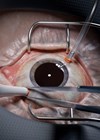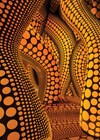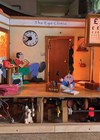For Eye News Feb/Mar 2024, I was delighted to hear from Dr Hosam Aglan. In New Zealand at the time, Dr Aglan shared wonderful insights into the art of folding origami, along with images from his own creations. The role of origami in Japanese culture is a beautiful wonder of creativity, widely used in storytelling, folktales and poems. More traditionally, it is used in weddings, gift giving and other practices.
The essence of origami is simple: to fold an object from a single piece of uncut paper. The crane is an auspicious animal in Japanese culture and is perhaps the most famous and recognisable origami design. Its exact origins are unknown, but it is steeped in myth and symbolises good health, happiness and a long life.
Traditionally, it is believed that if an individual folds 1000 origami cranes, their wish would come true! These cranes are often folded on a long string and then gifted to those hospitalised or in need, wishing them a speedy recovery. This practice is called ‘senbazuru’. Some believe that the undertaking of such a task has a higher meaning and symbolises the time and dedication one must devote to a craft, in order to perfect and become master of it.
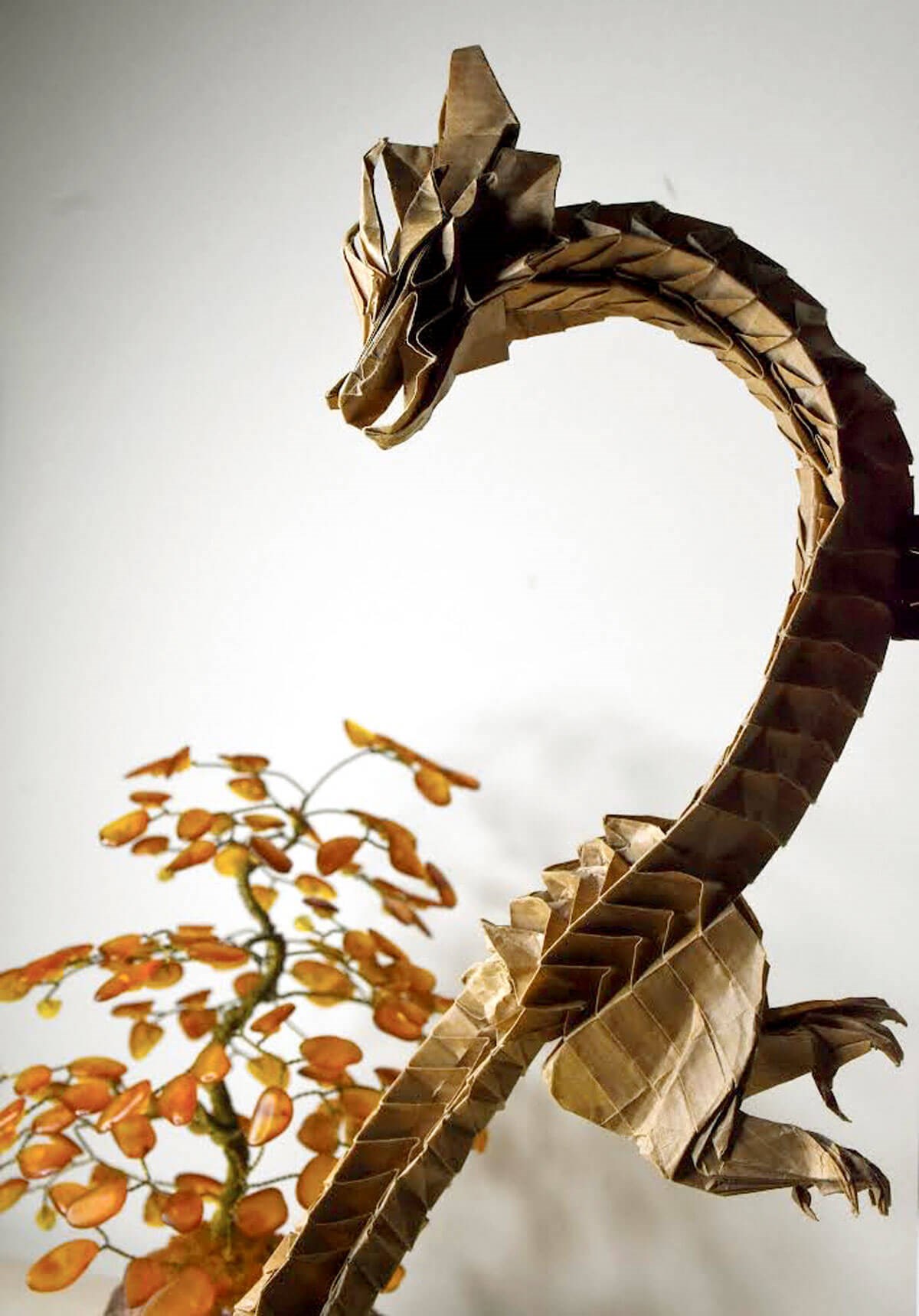
Shinlong Dragon designed by Lien Quoc Dat from nine modules of 14 x 28cm Kraft paper.
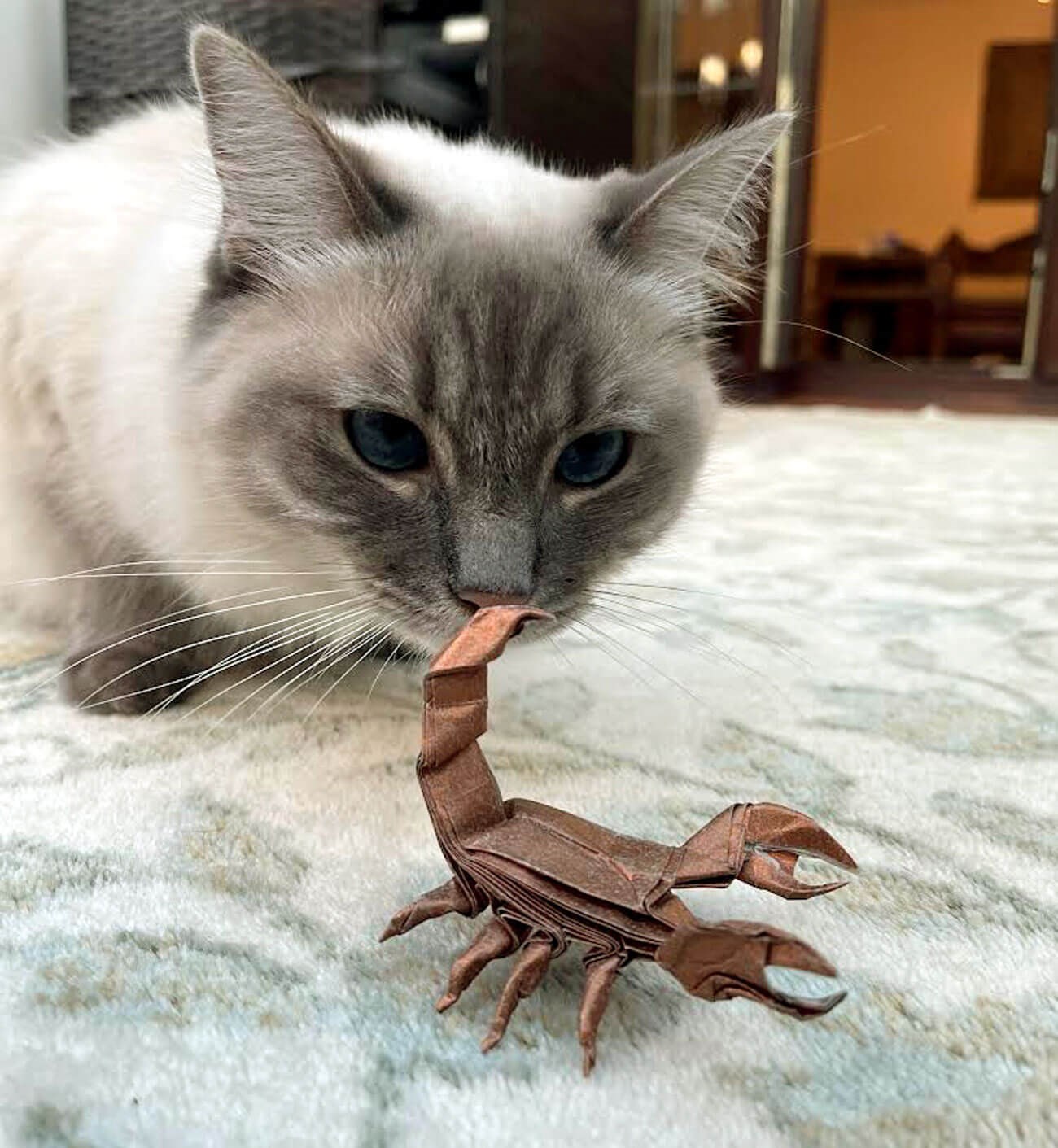
Scorpion by Jo Nakashima folded from 15 x 15cm copper foil paper.
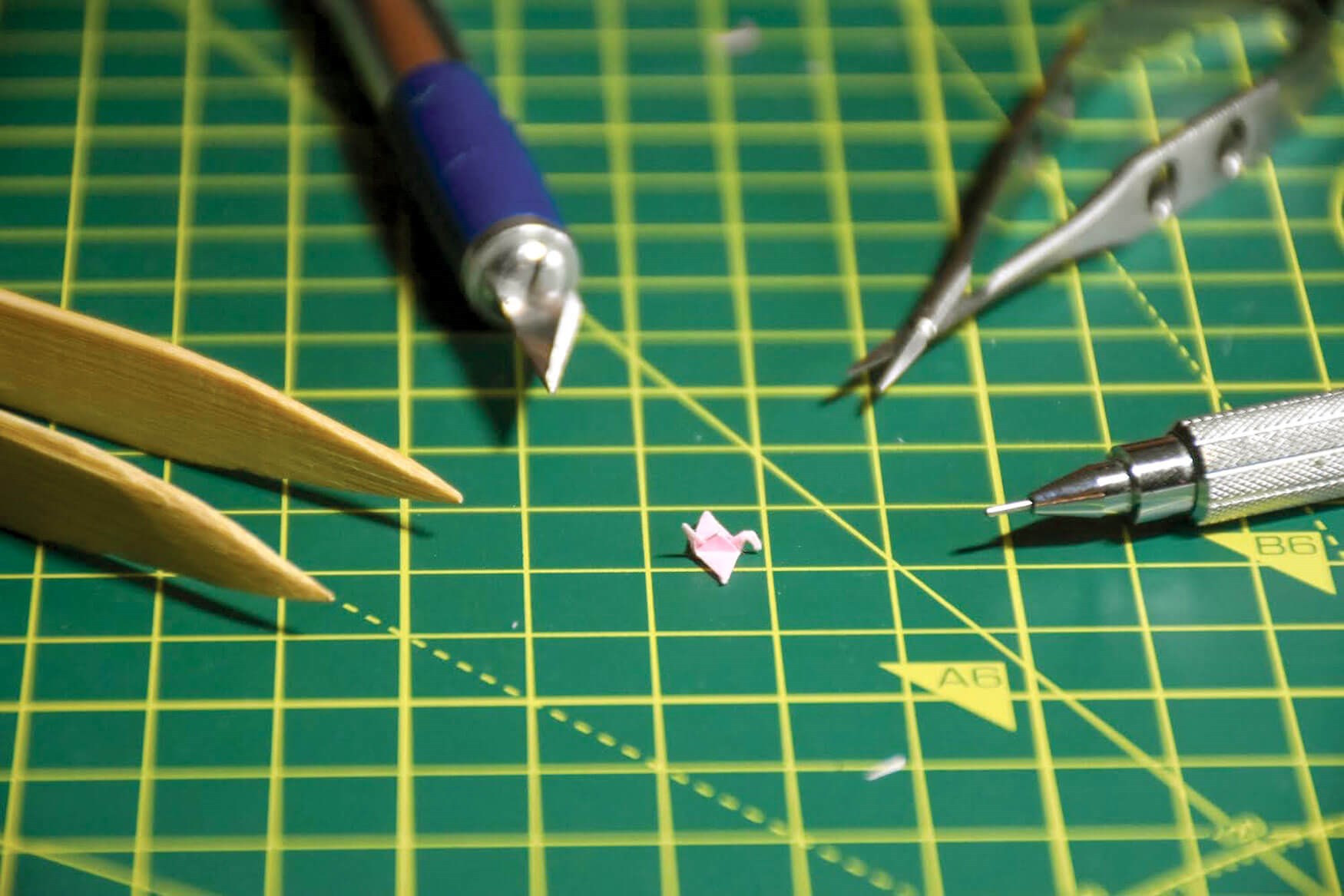
Classic miniature crane. Japanese Tsuru folded from 0.5 x 0.5cm paper.
Origami found its feet in paper, but its enthusiasts have applied its principles to far reaching disciplines and places. Perhaps the most remarkable example is the James Webb telescope, deployed by NASA to image deep space [1]. The principles of origami enabled NASA engineers to fold a highly complex and delicate 2D structure in the most efficient manner. In a similar way, the intraocular lens, injected by an ophthalmologist during cataract surgery, represents origami in action as the folded IOL is unfurled within the capsular bag. A recent study by Hiraki, et al. [2] even found that laparoscopic training for gastrointestinal surgery using origami may have the potential to improve the technical skills in laparoscopic surgery.
As a trainee in ophthalmology, a significant proportion of my time is spent honing and developing clinical and surgical skills which I hope will serve me a lifetime in my career. I have found myself in a privileged position, which enables me to combine my creative hobby and career. As ophthalmologists, we are very used to operating on a micro scale, as such perhaps it is apt to combine the two disciplines to produce ‘micro-origami’. Such an exercise, with the help of surgical loupes and microsurgical instruments, has allowed me to fold the traditional crane from a paper square 0.5cm x 0.5cm! While the thought of senbazuru composed of 1000 micro cranes seems daunting, the quest for it may be more metaphorical, as the skills applied may allow one to help those in need one crane at a time; one eye at a time.
References
1. Webb and Origami. James Webb Space Telescope.
https://webb.nasa.gov/content/features/origami.html
[Link last accessed January 2024]
2. Hiraki M, Kimura N, Kitagawa H, et al. Laparoscopic training for gastrointestinal surgery using Japanese traditional papercraft origami. Surg Laparosc Endosc Percutan Tech 2022;32(3):401–3.
COMMENTS ARE WELCOME



